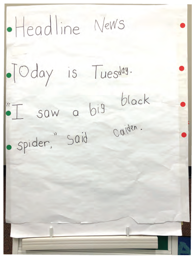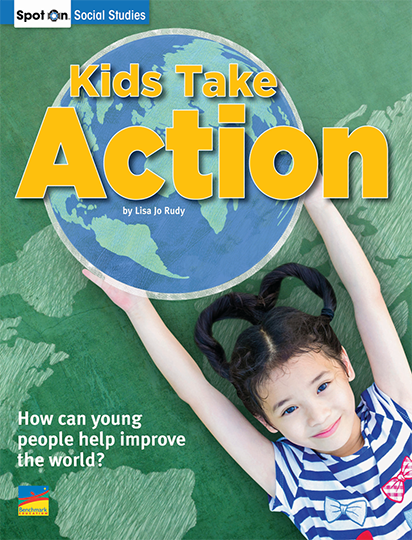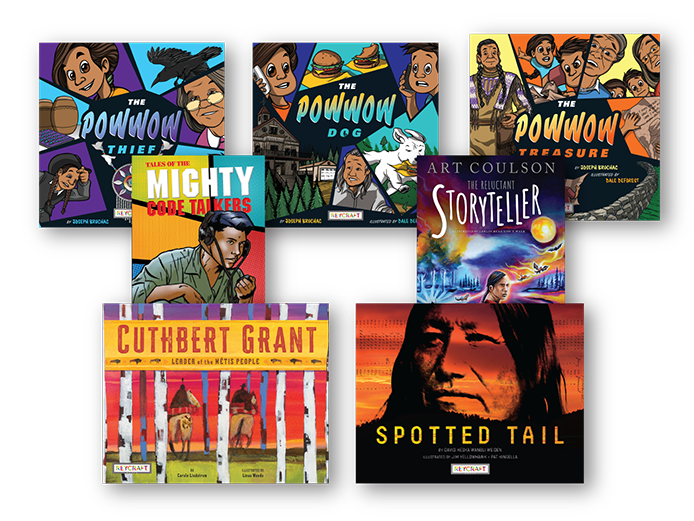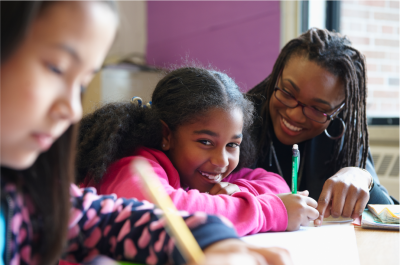4 Practices for Developing Strong Readers at Any Distance

by Patty McGee, M.Ed.
When I first moved into my house, one of my priority projects was my backyard garden. My mom gave me some of her flowers that I had always admired growing up. Black-Eyed Suzies, Bee Balm, Echinacea, and Shasta Daisies made for a lush, eye-catching garden that year. In the years to follow, some of the flowers did not come back, and after a few years I had a garden that was solely Black-Eyed Suzies. It was gorgeous! Yet I realized it was not the garden it could be with the other flowers, balancing out the beauty, creating a full and fruitful space.
This is similar to how I think of the evolution of my reading instruction. Within the garden of my reading experiences for students, I had many practices to plant. Some of these include shared reading, interactive writing, read-aloud, and independent reading. (By the way, I am not leaving out phonics instruction. That is the fertilizer and soil for my garden.) With these practices in hand, here’s what began to happen. Because I LOVE reading aloud, the read-aloud became just like my Black-Eyed Suzies. It took over my teaching! It was beautiful and we all loved it. Yet I came to realize read-aloud alone was not a full and fruitful reading experience for my students. I needed to rethink each practice and the place it held for a well-developed reading instructional experience. I invite you to do the same as you consider your teaching practices in your instructional setting—whether in-person, distance, or hybrid. As my mom shared her perennial plants with me, I here share with you the practices you may want to nourish so that your students continue to develop as readers.
Shared Reading
I love shared reading! It gives us the chance to use one short text, enlarged for all to see, over and over again for different purposes. It is like a one-stop shop for reading skill practices. Pick one text, usually a little more challenging than what students are reading independently, and revisit it for just a few minutes each day across multiple days. This works well for any grade level and any subject area. Take for example this text from the Spot On series:

A plan for this text (and any text) can include everything from comprehension, fluency, word solving, and vocabulary, to writing about reading, and more! Here’s a sample plan:
- Day 1: Comprehension
Read and practice the strategy. Read, pause, think. - Day 2: Comprehension
Read the pictures. Point to different parts of the images and say, “This is teaching me…” - Day 3: Fluency
Chorally read using a teaching voice, emphasizing words that are most important. - Day 4: Word Solving
Choose the word “annoying” and connect it to the work in phonics. Imagine you didn’t know that word—what did we learn in Word Study that would help us solve the word (word pattern, suffix, double consonant, etc.)? - Day 5: Vocabulary Building
Take the word “telescope” and break it apart. Use those parts to study their root meanings and other words that use those same roots.
And you may go on into many more days with the same text! For even more on using shared reading in the classroom, check out Whole-Group Reading Instruction by Adria Klein and Peter Afflerbach.
Interactive Writing
You might be thinking, “How can interactive writing help readers?” I have found great inspiration from C.C. Bates’s new book Interactive Writing: Developing Readers Through Writing. The reciprocity that co-creating a piece of writing brings to readers is magical.
Interactive writing is the process in which the teacher and students co-create a piece of text. What sets interactive writing apart from shared writing is that the teacher intentionally and strategically shares the pen. For example, “a child may come up to the chart on which the text is being written and contribute the first letter to a word that begins with the same letter as his name” (Bates 2020). Once that shared text is created, it can be used as a piece that students read! That is the magical reciprocity of the practice.
Pick something that is challenging for a reader. This can include anything from concepts of print, phonics and decoding, working with words, monitoring for meaning, fluency, and more. For example, you may see that your readers have difficulty solving multisyllabic words. Create a piece of writing together, share the pen for different syllables, and then use that very same text to practice solving multisyllabic words.
Here’s an example of a piece of interactive writing that helps students work on concepts of print. Notice the green and red dots to indicate directionality.

Deepening Comprehension Using Social-Emotional Language (SEL) and Read-Alouds
When we read, whether we are a child or a grown-up, we are healthier in mind and body (Brown 2016). Comprehension of what we read is our means to this end. There are so many ways, moves, and tools to build a deep understanding of what we read. Some are complex, but the one I suggest here is rather simple yet profound in outcome.
One way to deepen comprehension is to use social-emotional language as a thinking lens.
Let’s take the word "perseverance" as an example. You may read a text aloud, ask students to plant that word in their minds as you read to them, and then discuss ideas that come to mind with "perseverance" as an anchor.
You may want to try using the book Kids Take Action by Lisa Jo Rudy. This piece of nonfiction highlights many different people, particularly young people, who have changed the world in ways that range from saving whales to establishing laws that reduce pollution. Reading with the lens of perseverance, students are able to learn more than just facts and more easily delve into a deeper understanding of how these facts fit together. They also build insights to understand themselves and the world around them with more nuance.

In the webinar, there are other words and ideas on how to use SEL language to develop deeper comprehension of texts.
Scaffolds for Independent Reading
Shared reading, interactive writing, and SEL language lenses are three very helpful ways to develop readers at any distance. That said, we always want to ensure students have an opportunity to use what we have taught in more supportive structures, such as these, and take what they have learned “on the road,” so to speak. In other words, we want students to be able to transfer reading skills from our collaborative learning structures into independent reading. I have two suggestions to support students with this transition.
First, share strategies. A strategy is a mini how-to, a step-by-step that helps students comprehend, read fluently, and solve tricky words. With these strategies nearby, when understanding breaks down, students can turn to these strategies to shore up meaning.
Take, for example, the ever-challenging “finding a main idea in a text.” We can make visible a few strategies, likely pre-taught in shared reading or read-aloud, that students can utilize when difficulty arises.
Looking for more strategies? You can find them in Benchmark Booster and Benchmark Writer's Workshop.
Second, use text sets. Text sets are a collection of books, videos, websites, podcasts, images, etc., that are assembled based on a common connection. They may be topic based, such as the text set on pandemics from Benchmark Booster.
I especially like this collection on indigenous people. I love the mix of nonfiction, historical nonfiction in graphic novel form, and a modern-day graphic novel fiction series. And these books are so enjoyable to read.

For younger students, you may choose a collection that is based around what is most accessible to read, like emergent story books or decodable texts based on your phonics instruction. You may even make a collection of texts using interactive writing pieces. The sky's the limit!
Incorporating All Four Practices into Your Reading Community
Developing strong readers at any distance is possible when we keep the garden of our teaching varied and lush. That said, it can also be daunting to take on all of these practices at once, especially if they feel new and unfamiliar. In this case, I suggest that you choose one practice that you feel will best support your students and try that out until you are comfortable. Then, when ready, come back to this article, webinar, and linked resources to guide and support you in your next steps. Know that we at Benchmark are here to help you help your students!
About the Author
 |
Patty McGee, M.Ed. is an educator, author, and consultant. She has worked near and far—in her own hometown of Harrington Park and across the world in Abu Dhabi and many places in between. Patty’s passion and vision is to create learning environments where teachers and students discover their true potential and power through joyful inquiry, study, and collaboration. Her favorite moments are when groups of teachers are working with students together in the classroom. It is truly where the magic happens. Her latest book is Writer's Workshop Made Simple: 7 Essentials for Every Classroom & Every Writer. Patty is also a contributing author to Benchmark Writer’s Workshop and the program author of Benchmark Grammar Study Mico-Workshop. |
















Comments